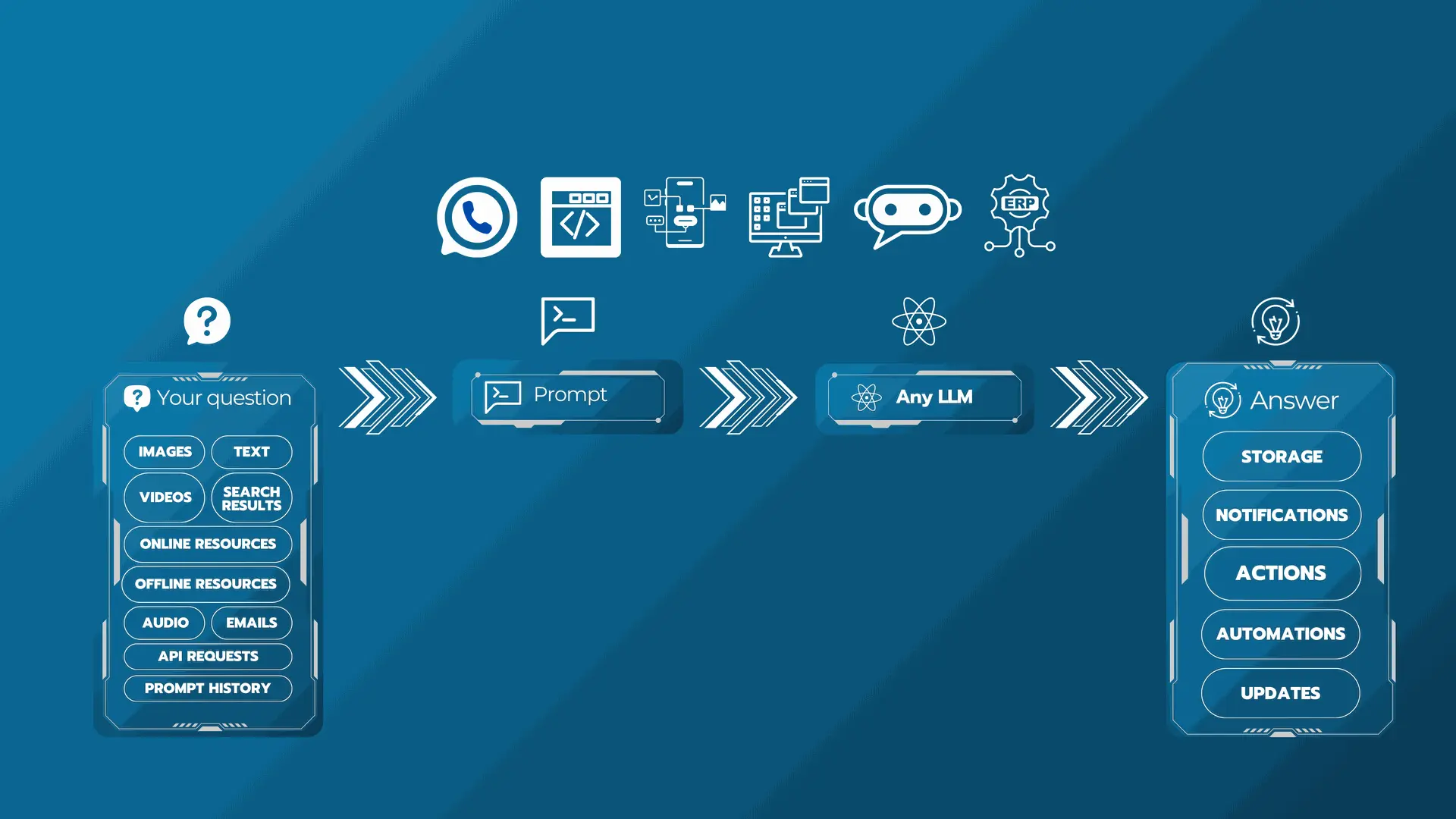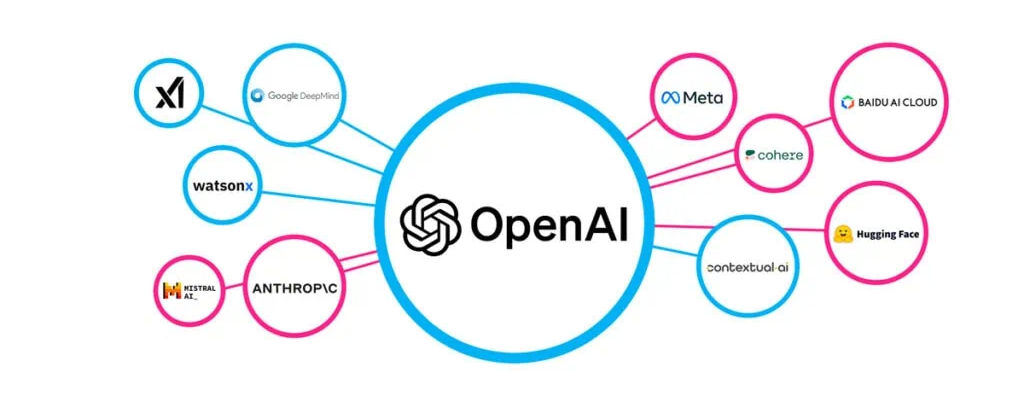The 5 Stages of AI Implementation: A Roadmap for Smarter Business
Artificial Intelligence (AI) has gone from being a futuristic concept to a practical tool transforming businesses across industries. But not all companies adopt AI the same way, nor do they achieve results overnight. AI implementation is a journey, with clear stages that determine how much value it can deliver to your business.
Here’s a look at the 5 stages of AI implementation—from basic experiments :

to industry-leading innovation—and how you can navigate them to make AI work for you.

Stage 1: Chatbot Karaoke 🎤
This is where most companies begin their AI journey. They experiment with off-the-shelf AI tools like ChatGPT or Gemini by buying subscriptions or API keys for employees.
- What it looks like: Employees use AI for simple questions like, “What’s our bestselling product right now?” The AI responds with guesses or general insights but often misses the mark.
- Why it’s limited: These AI models don’t know your business, its context, or your industry. They can’t access internal data or provide meaningful insights.
- Pros: Quick, easy, and inexpensive to get started.
- Cons: Answers are generic, lack depth, and can lead to frustration.

Stage 2: AI Personal Trainer 🏋️ (Prompt Engineering & Context)
At this stage, companies take AI a step further by adding context. They feed it internal data—like reports, knowledge bases, and sales trends—and guide it with prompt engineering techniques to improve its reasoning and accuracy.
- What it looks like: Using techniques like:
- Chain of Thought (CoT): AI reasons step-by-step, analyzing trends and sales data to give detailed answers.
- ReAct (Reason + Act): AI searches company data and external tools before providing insights.

- Example: AI can analyze Walmart’s sales data and recommend a summer BBQ campaign for its bestselling BBQ sauce.
- Pros: Smarter, more actionable insights.
- Cons: Slower and costlier, with a need for careful setup and management.
Users can participate in beta testing programs, providing feedback on upcoming releases and influencing the future direction of the platform. By staying current with updates, you can take advantage of the latest tools and features, ensuring your business remains competitive and efficient.
Stage 3: The AI Bootcamp 🎓 (Fine-Tuning)
Now, things get serious. Companies fine-tune existing AI models to specialize in their specific industry or business. This involves training the AI on company-specific data, such as product descriptions, customer reviews, and internal documents.

- What it looks like: AI becomes an expert in your business, offering insights tailored to your operations.
- Example: For a retailer like Walmart, fine-tuning helps the AI understand sales patterns, customer preferences, and unique terminology.
- Pros: Custom insights, improved efficiency, and a stronger alignment with business goals.
- Cons: Requires technical expertise and a commitment to data preparation.
Stage 4: Brain Surgery for Bots 🧠 (Retraining Models)
For industries with highly specialized needs—like healthcare or finance—fine-tuning isn’t always enough. Retraining an open-source model becomes necessary to achieve advanced levels of customization.
- What it looks like: AI is retrained with unique data sets and architectures to meet the demands of niche applications.
- Example: AI tailored for robotic surgery or algorithmic trading.
- Pros: Unmatched precision and performance in specialized fields.
- Cons: Requires significant resources and expertise.
Great stories have a personality. Consider telling a great story that provides personality. Writing a story with personality for potential clients will assist with making a relationship connection. This shows up in small quirks like word choices or phrases. Write from your point of view, not from someone else's experience.
Great stories are for everyone even when only written for just one person. If you try to write with a wide, general audience in mind, your story will sound fake and lack emotion. No one will be interested. Write for one person. If it’s genuine for the one, it’s genuine for the rest.
Stage 5: The AI Avengers 🦸♂️ (Building from Scratch)
This is the ultimate stage—reserved for major players like OpenAI, Google, or Anthropic. Here, companies build their own AI models from the ground up to achieve unparalleled innovation and control.
- What it looks like: Entire teams of researchers and developers create proprietary AI tailored to specific business objectives.
- Example: Building a revolutionary AI model to set new industry standards.
- Pros: Total customization and industry leadership.
- Cons: Expensive, exclusive, and not for everyone.

Where Does Your Company Fit?
Most businesses find their sweet spot in stages 2 and 3, where AI becomes smarter and more tailored to their needs without the immense costs of stages 4 and 5. At AItification, we specialize in helping companies at these levels, ensuring they get the most out of their AI investment while keeping it practical and affordable.
Ready to Take the Next Step?
Whether you’re just starting your AI journey or ready to fine-tune your models, we’re here to help. Contact us at AItification.com to explore how AI can revolutionize your business.
And don’t forget to check out our resources for deeper dives into AI implementation.
Your journey to smarter business starts today. Let’s make it happen!


The 5 Stages of AI Implementation: A Roadmap for Smarter Business